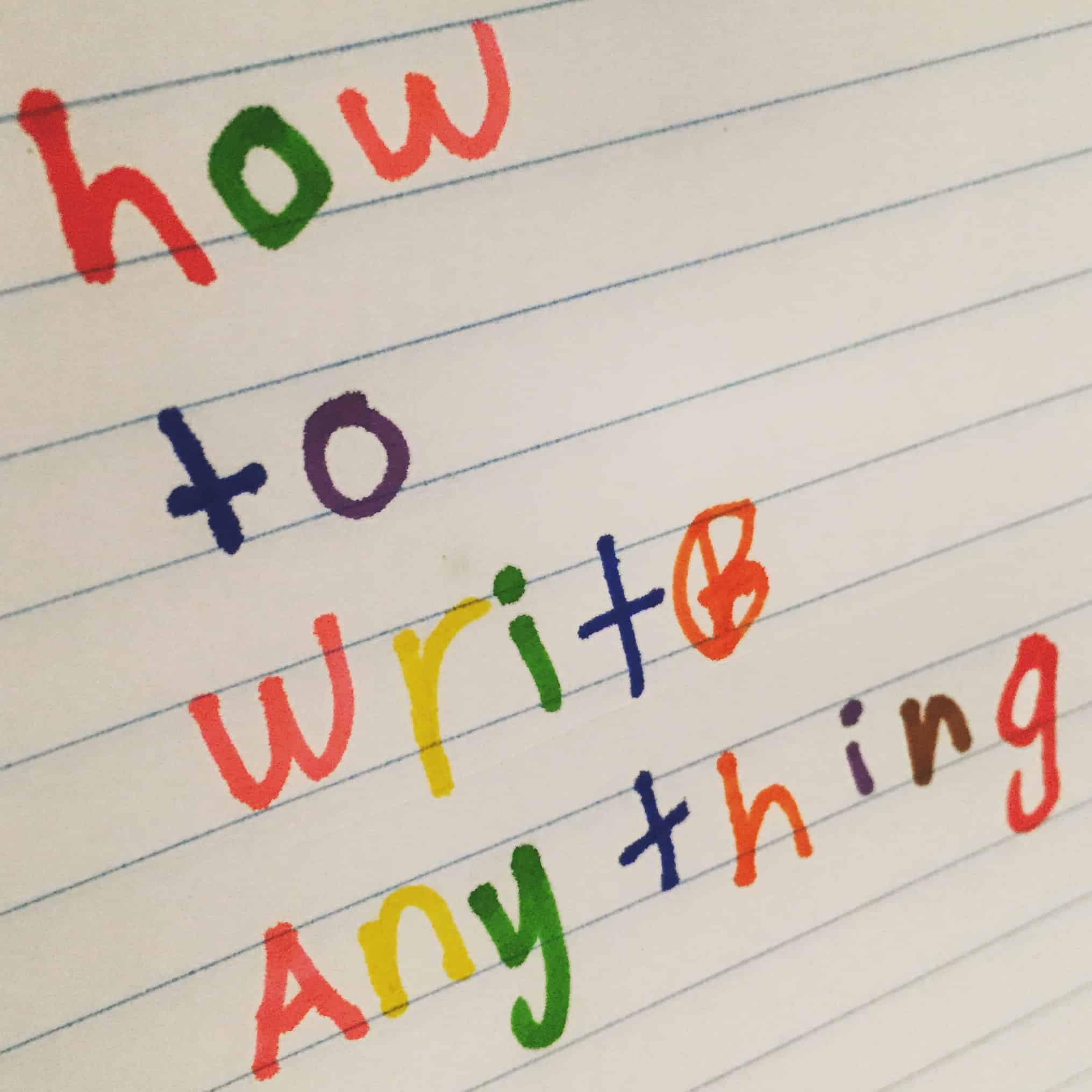Whether you’re writing a corporate document, a website, an advertisement or a novel, the writing process is always the same… So what’s this secret formula that will help you write anything?
Alarm bells should ring when you ask someone how they’re going with a document and they tell you they’re half way through it because they’ve written, say, 500 of a thousand words. Chances are unless they’re some kind of writing genius – if such a thing exists – their work will be flawed.
That’s because writing doesn’t simply involve writing. Instead, it can help to think of it as a four step process, and if you miss one step it shows.
That goes for whether you’re drafting a presentation, writing a corporate document, or doing something that sounds entirely more glamorous — like writing an advertisement, an article or even a novel.
Good writing means playing four different roles
This is an idea from writing guru Bryan Garner, who says that to write effectively you need to think of yourself as four different characters:
- the madman – who develops ideas
- the architect – who produces a blueprint
- the carpenter – who writes the first draft, and
- the judge – who refines and edits it.
If you’re thinking, ‘four steps? I barely have time for one’, don’t worry. This technique substantially reduces the time it takes to write, rather than adding to it. It also reduces the danger that you’ll ever suffer from writer’s block.
Here’s how you do it.
The madman
When you’ve done your research and you’re ready to begin writing, the first hat you should wear is that of the madman. The madman is essentially a brainstormer: brilliant but sloppy. He generates as many ideas as possible on a topic without really giving any consideration to how good each one is.
You might write down single words or phrases. Or you could use a technique like mind mapping or thought bubbles. Whatever you do, remember to keep it simple. Don’t try to write out full sentences or paragraphs, otherwise you risk bringing your critical mind too early into the writing process.
Trying to refine your work and thoughts at this stage is a sure recipe for writer’s block. Or worse, it’s a recipe for writing something no one wants to read. Because if someone’s bad at the madman phase, or if they leave it out altogether, they tend just to write the same stuff everyone does, and their work lacks originality or insight.
The architect
This is the first analytical step. The architect’s job is to put a structure in place by taking the madman’s ideas and turning them into a compelling narrative.
Do this by casting a critical eye over the madman’s work. Figure out which ideas are good and which aren’t, and get rid of those that don’t make the grade. Then work out the links between your ideas and group related ideas together.
Arrange the ideas or groups of ideas you do want to use from most compelling to least compelling. Again, this isn’t a time to start writing out full sentences. It’s about building the framework on which your article or piece of writing will hang.
You should see your work starting to take shape.
The carpenter
The carpenter’s job is to join the ideas together with words. It’s what most people think of as the writing phase.
Take each of the ideas you’ve plotted out and turn them into sentences. But even now, don’t get caught up too much on the way your writing looks or sounds. Just make sure you get it all down.
This can be the most intense of all four steps or hats, so try to avoid distractions. When you’ve finished, you should have a first draft. But don’t get too excited, just yet…
The judge
Here’s where the real action happens: the editing, or judge phase. This when you make sure what you’ve said is said well. It’s also the time to refine your introduction and conclusion and to make your whole piece of writing tight.
Use a critical eye. Ask yourself, is it structurally sound? And are you saying what you want to say? Are there typos or corrections that need to be made?
Done properly, this fourth and final stage could take at least as long as the first three steps put together. You probably don’t have that kind of luxury. You have time and cost pressures. But never skip the judge phase. Otherwise all you’ll have is a first draft.
And, as Ernest Hemingway put it, ‘the first draft of anything is shit’.
Contact us today to find out how Antelope Media can help your business engage audiences with the written word.
(A version of this article first appeared on the Law Society of NSW CareerHub.)
Subscribe now to get the latest thinking on content marketing, content strategy, copywriting and communications from Antelope Media.
[subscribe2]Read more: What Hemingway can teach us about digital writing
Read more: 5 things lawyers can learn from copywriters
Read more: 5 tips when writing for the web
Read more: How do you learn to write? 6 tips to improve your writing
Related services: Copywriting, Corporate Writing and Editing, Content Marketing.

